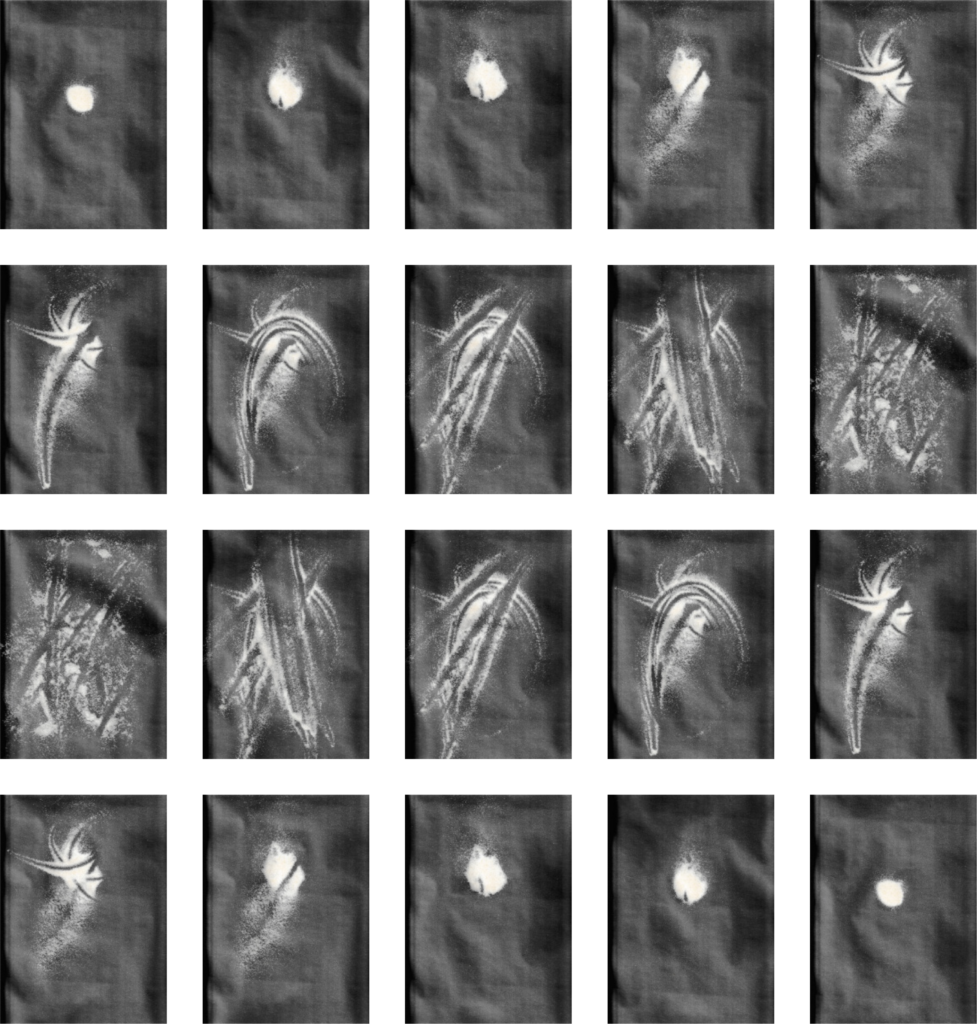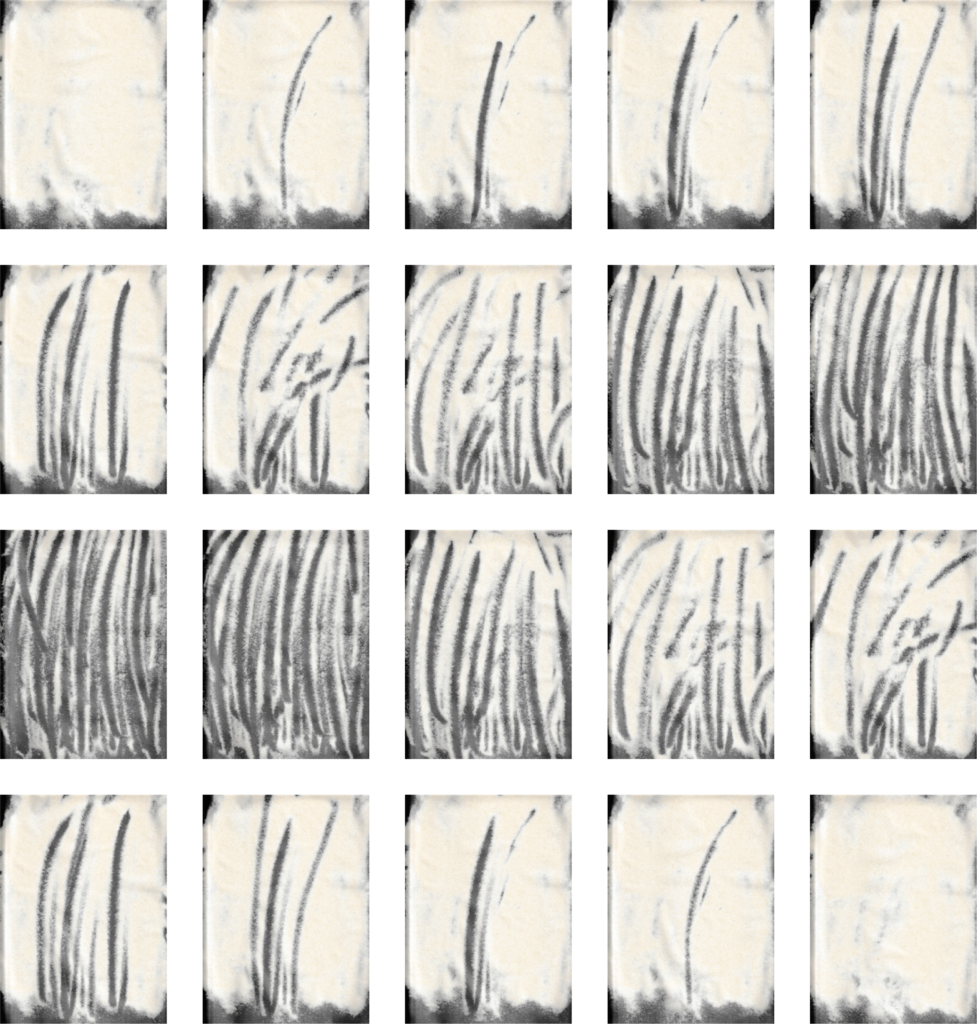II ON ENTROPY AND NONSPACE
Dominika Kopiarova
Entropy – deriving its definition from classical thermodynamics – is the fundamental process indicative of the winding down of systems. Entropy measures uncertainty or randomness associated with the disorder, disintegration, and irreversibility. Unavoidably, it serves as a tool in interpreting landscapes transforming due to partial or complete abandonment of industrial activity.
Robert Smithson – who associated entropy with economic and social systems as much the temporal – conceived of the industrial landscapes as sites that reveal the essentially entropic character of contemporary civilisation. For Smithson, strip mines, quarries, waste dumps, zones of deindustrialisation formed by shrinking towns and industrial rust belts, were precisely where ‘the vast forces of entropy, both natural and social, silently worked to dissolve the landscape, cancel the present, render experience as memory.’[7] Dickinson, ‘Journey into Space: Interpretations of Landscape in Contemporary Art’ in Technologies of landscape: from reaping to recycling, ed. D.E. Nye (Amherst: University of Massachusetts,1999), p. 56.

In ‘A Tour of the Monuments of Passaic’[8] , Smithson renders the processes of entropic disintegration acting on an industrial riverfront. He observes the aesthetics of the construction sites and documents the industrial artefacts – concrete abutments, holes, extinct machines, pumping derrick ‘monument in the middle of the river’[9] – with a fascination and care that would otherwise be solely given to such foreboding scenery. ‘An artificial crater that contained a pale limpid pond of water, and from the side of the crater protruded six large pipes that gushed the water of the pond into the river’[10] is equated with a monumental fountain. For an unfamiliar reader, Smithson would be bordering on satire. He suggested distancing from the tendency to break away monumental artefacts from its landscape and instead contemplate the postindustrial as a whole in its essential continuity. The focus no longer lies on the modernist-admired factory architecture and the engineered concrete silhouettes of silos but on the territory modified for production – drained, excavated, polluted – and its infrastructure.
Following Tony Smith’s[11] attitudes towards a new ‘subaesthetic’ terrain and a radical understanding of sculpture, Smithson too contemplated that a sculpture concerns itself with the absence of space, relying on the ‘voids that displace the solidity of space’ rather than objects to activate the space.[12] The ‘holes’ in the landscape represent the negativity of the obsolete – its temporal dimension and the continuity of its production.[13] Maroš Krivý, ‘Industrial architecture and negativity: the aesthetics of architecture in the works of Gordon Matta-Clark, Robert Smithson and Bernd and Hilla Becher,’ in The Journal of Architecture, 15/2010, pp. 827-852. Smithson emphasised those open spaces that assimilate in zones of abandonment and obsolescence. It is precisely this class of sites that would be called entropic voids in the landscape. Waste areas, quarries, and excavations where energy has been drawn out are considered sculptures in the landscape.
Smithson’s artistic activity did not necessarily consist of intervening in the landscape but creating a parallel landscape.[14] If sculpture concerns itself with space as void, it deals with the space’s counterpart, the ‘nonspace’. ‘Nonspaces’ are the ‘immediate surroundings that fail to impinge themselves on modern consciousness.’[15] They point away from themselves and toward their referents, effectively becoming signs or containers for someplace else. ‘Nonspace’ is then a subject of the ‘nonsite’ – a three-dimensional logical picture, an abstract metaphor representing an actual site but not actually resembling it.[16]
Smithson recognised ‘nonspaces’ in strip mines. ‘What, after all, are strip mines but scalped mountains, voids testifying to the act of removing, negatives left after the positive ore has been scraped off?’[17] However, to borrow from Smithson’s terminology could be to extrapolate the interpretations of ‘nonsites’ onto the continuous production and reproduction of obsolete landscapes. Obsolete landscapes are containers for the industrial function that is transferred onto them and remain in use for as long as they are referred to as the next industrial parallel landscapes.
In the cycle of obsolescence, the future industrial are simple referents – earthworks – of the precedent industrial sites. Territories in Obsolescence can also be acknowledged as ‘nonsites’ or earthworks now undergoing entropic forces, and postindustrial becomes a nonterm, always in reference to a function existing elsewhere.
Smithson criticised architects’ inability to cope with entropy and insisted that entropy was a fundamental rather than repressed condition of architecture.[18] Entropy acts on industrial landscapes and functionless architecture. And architecture is an inherently negentropic act! If postindustrial is considered inherently entropic, it is inevitably moving away from architecture for as long as architecture chooses to force purpose onto obsolescence and fight entropy. Postindustrial becomes an artificial sculptural landscape not in opposition to nature but in opposition to architecture.

